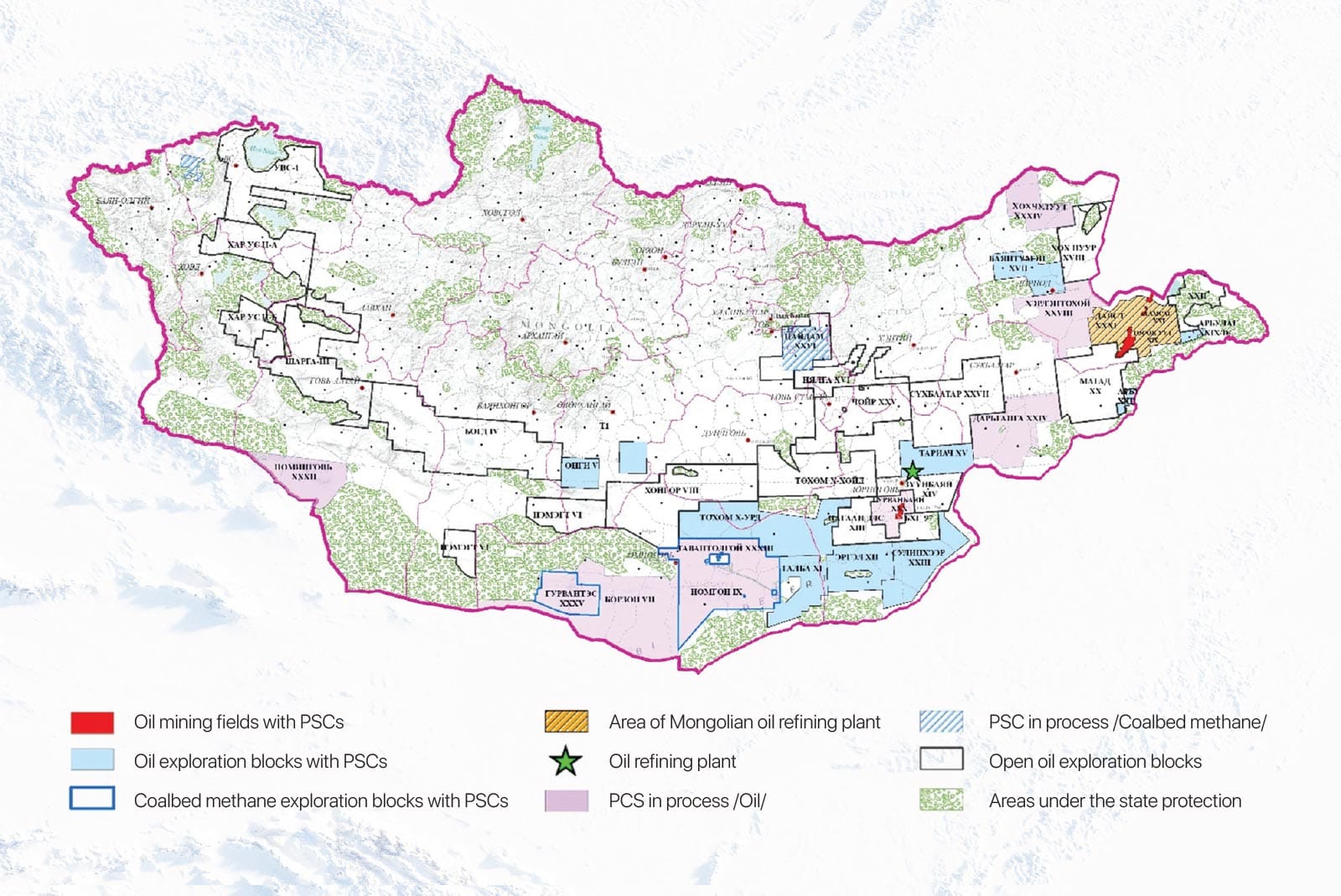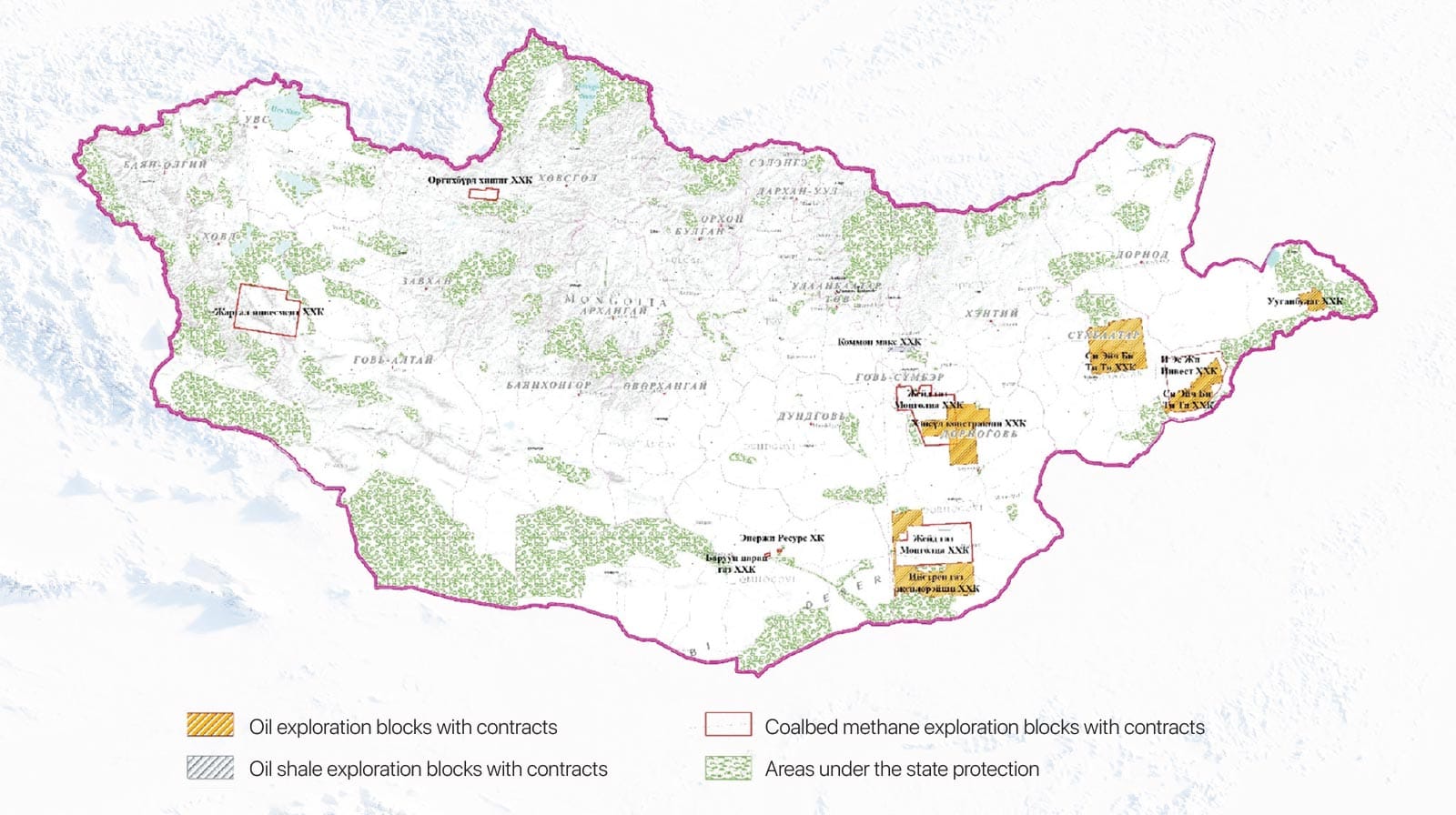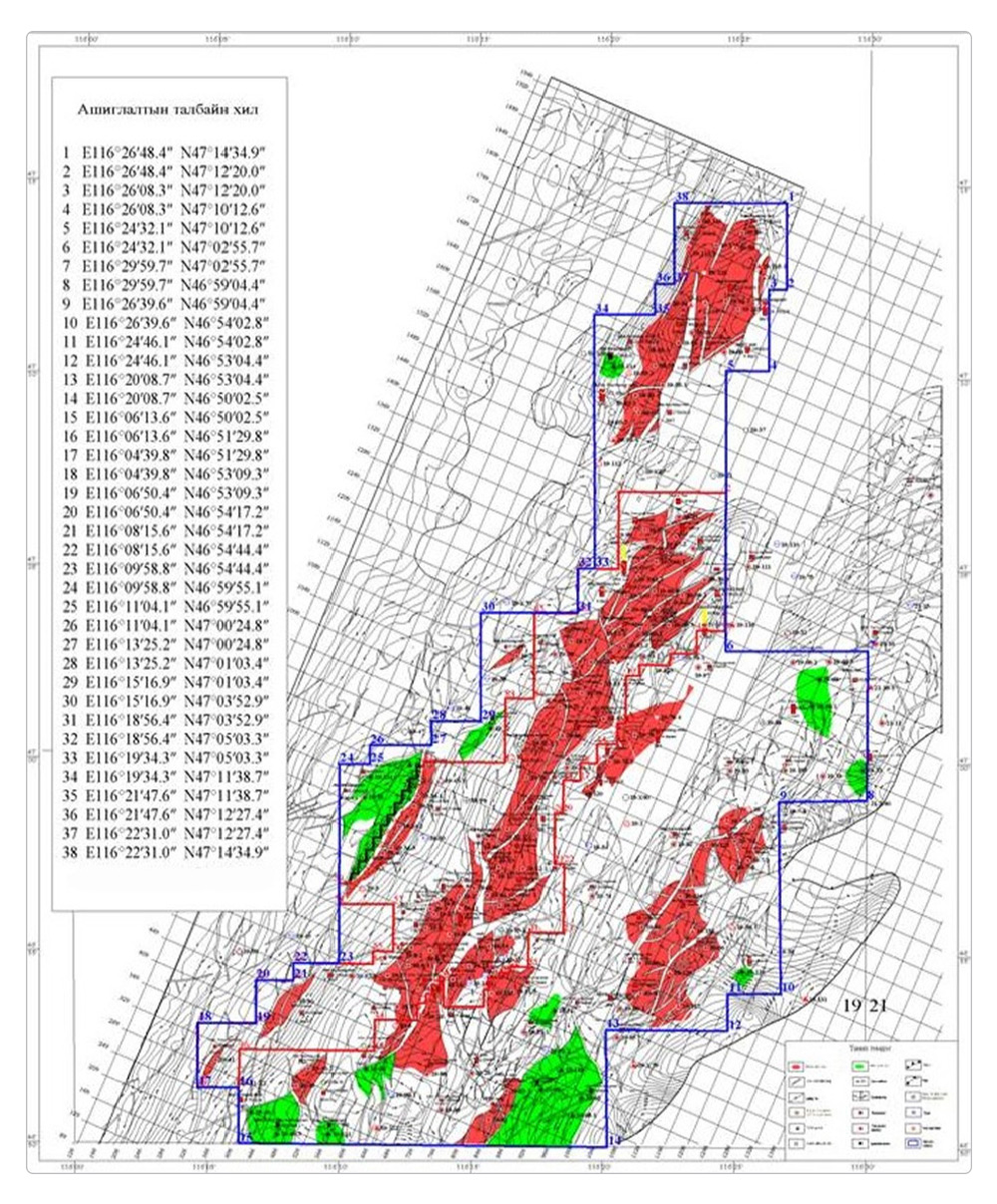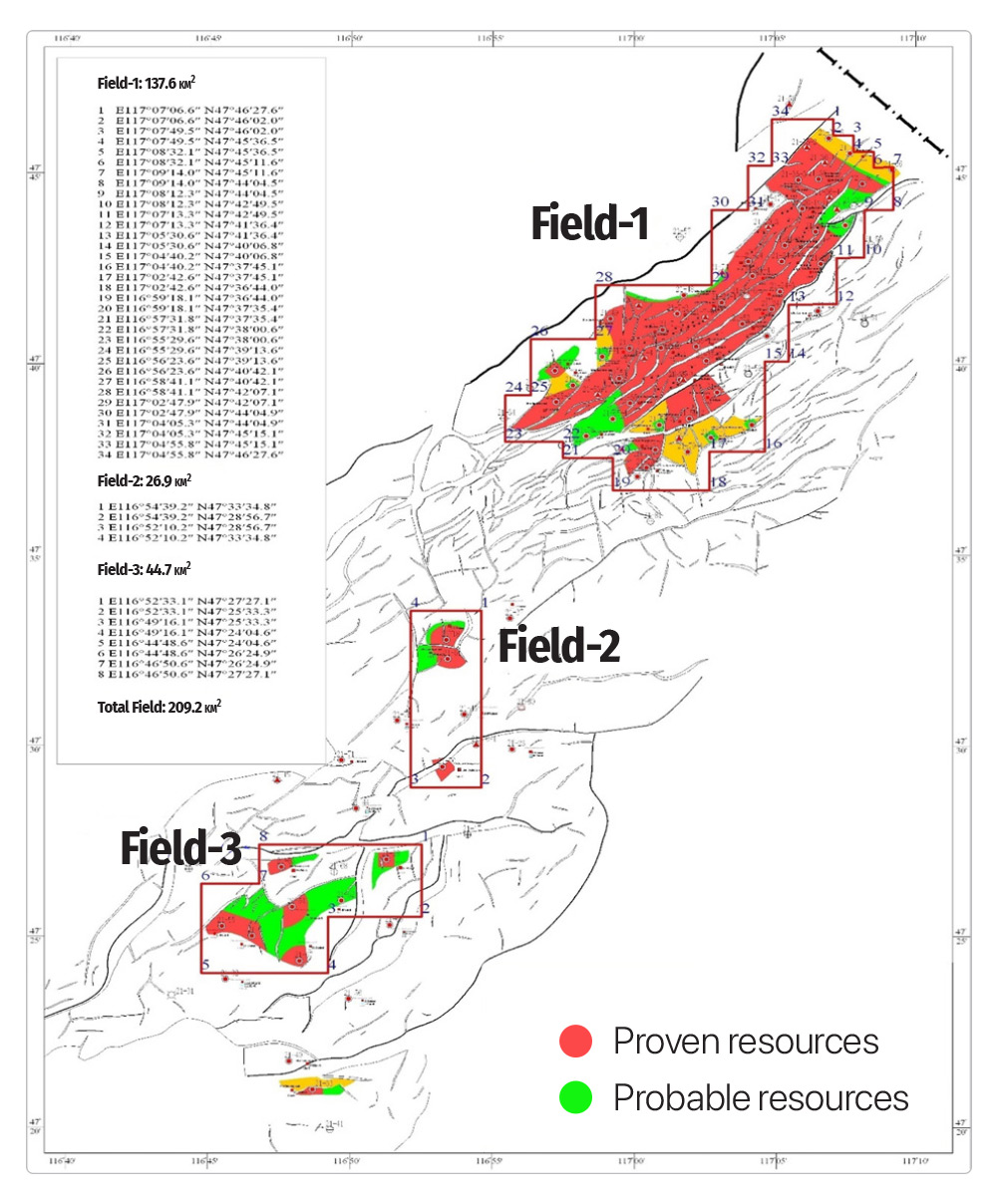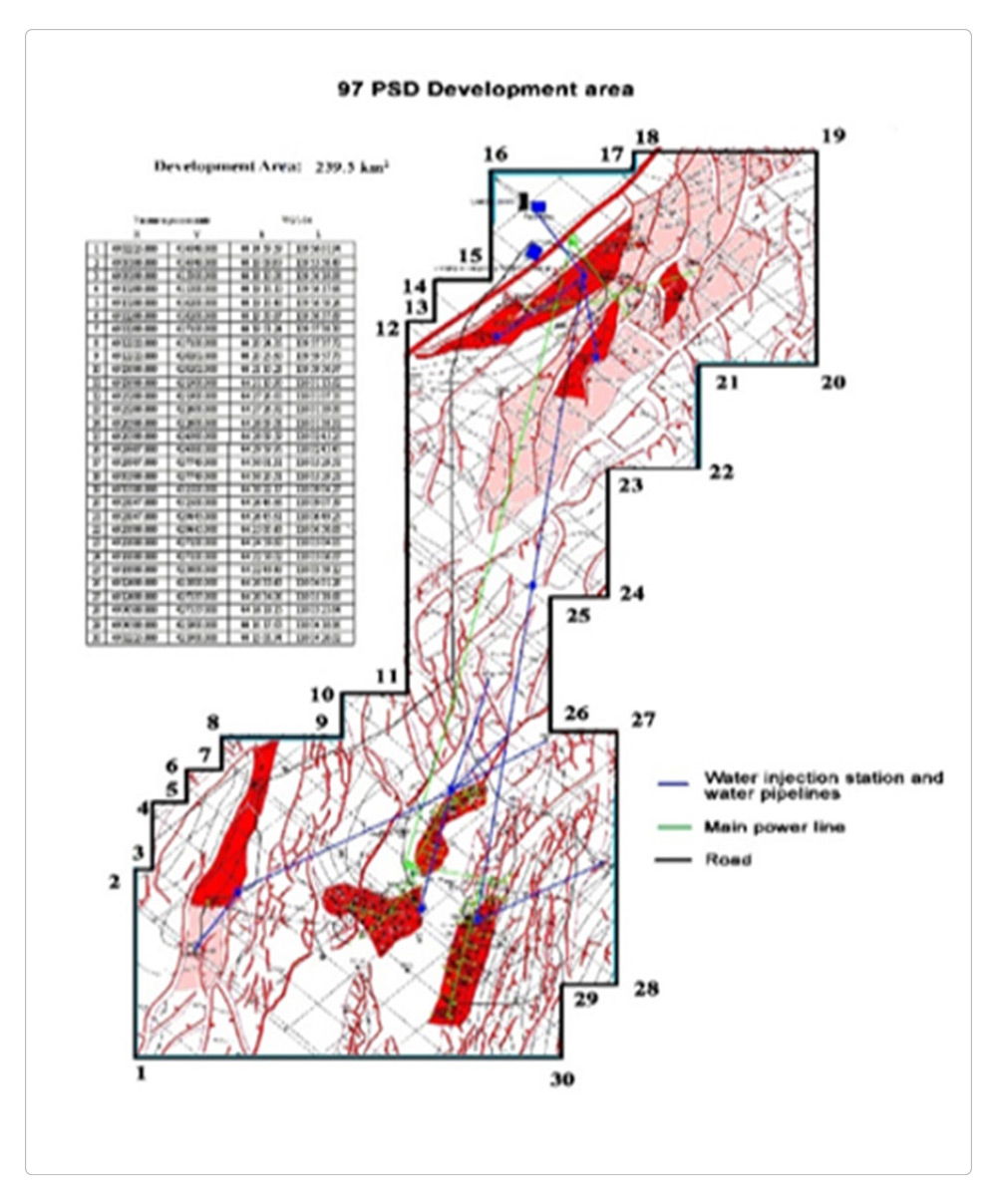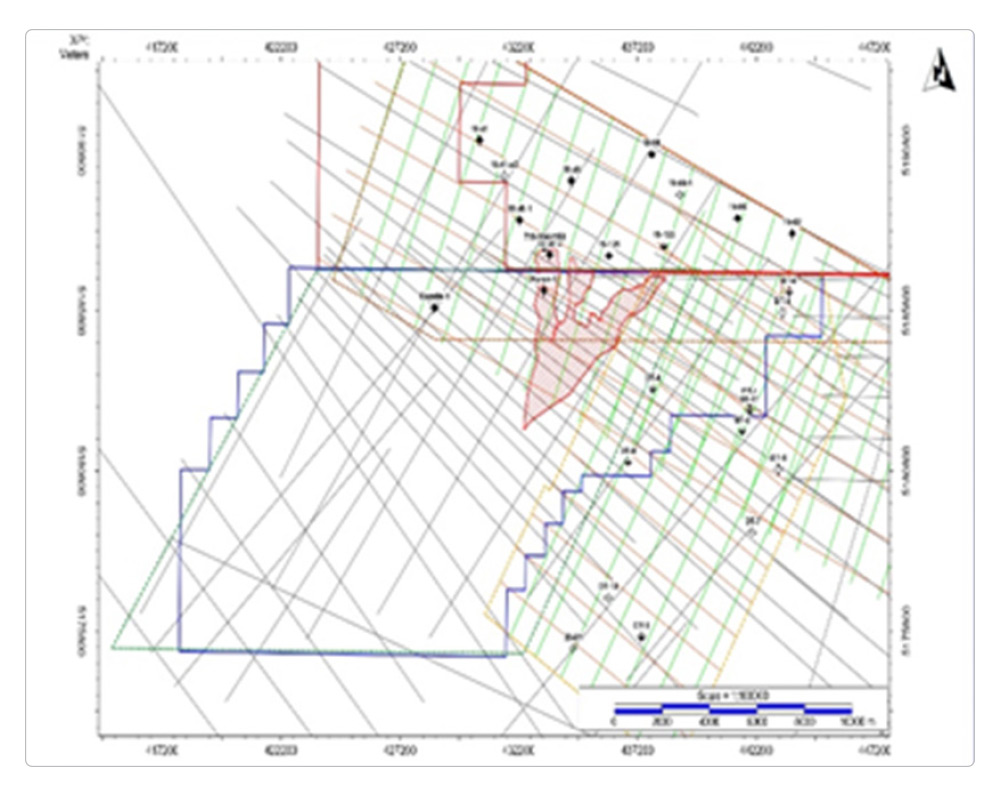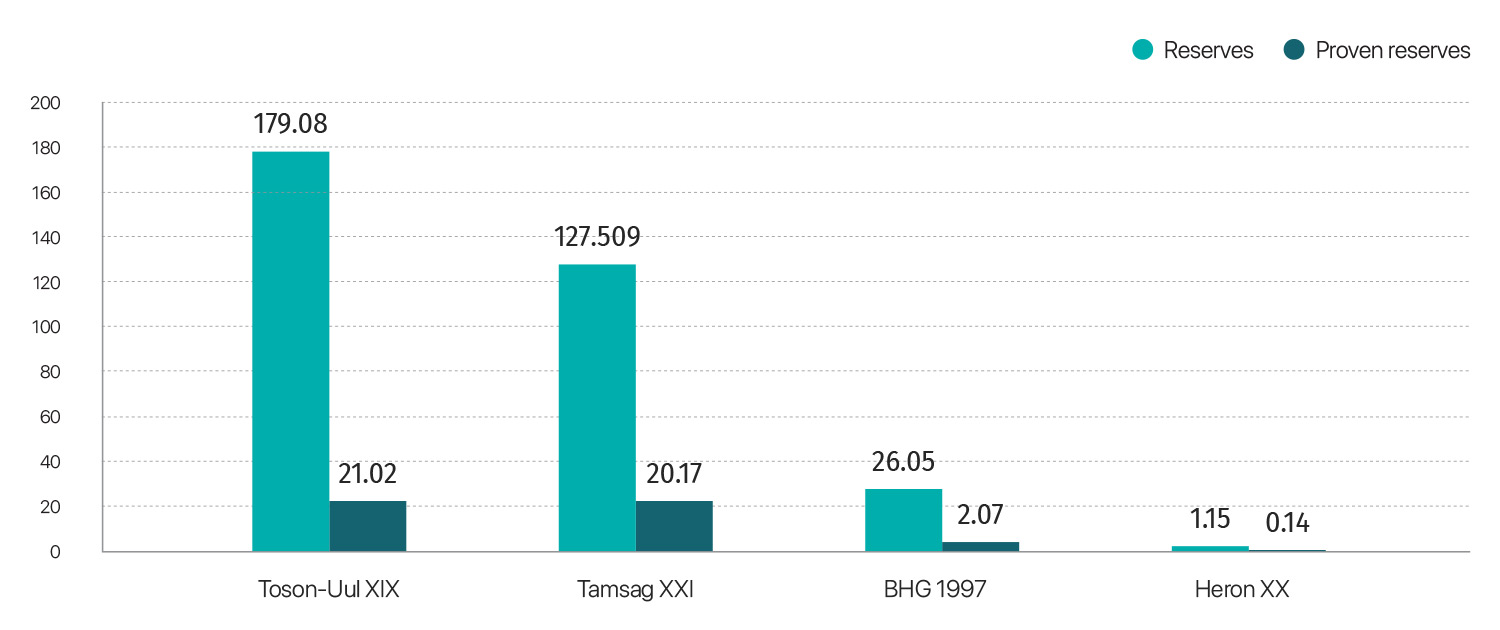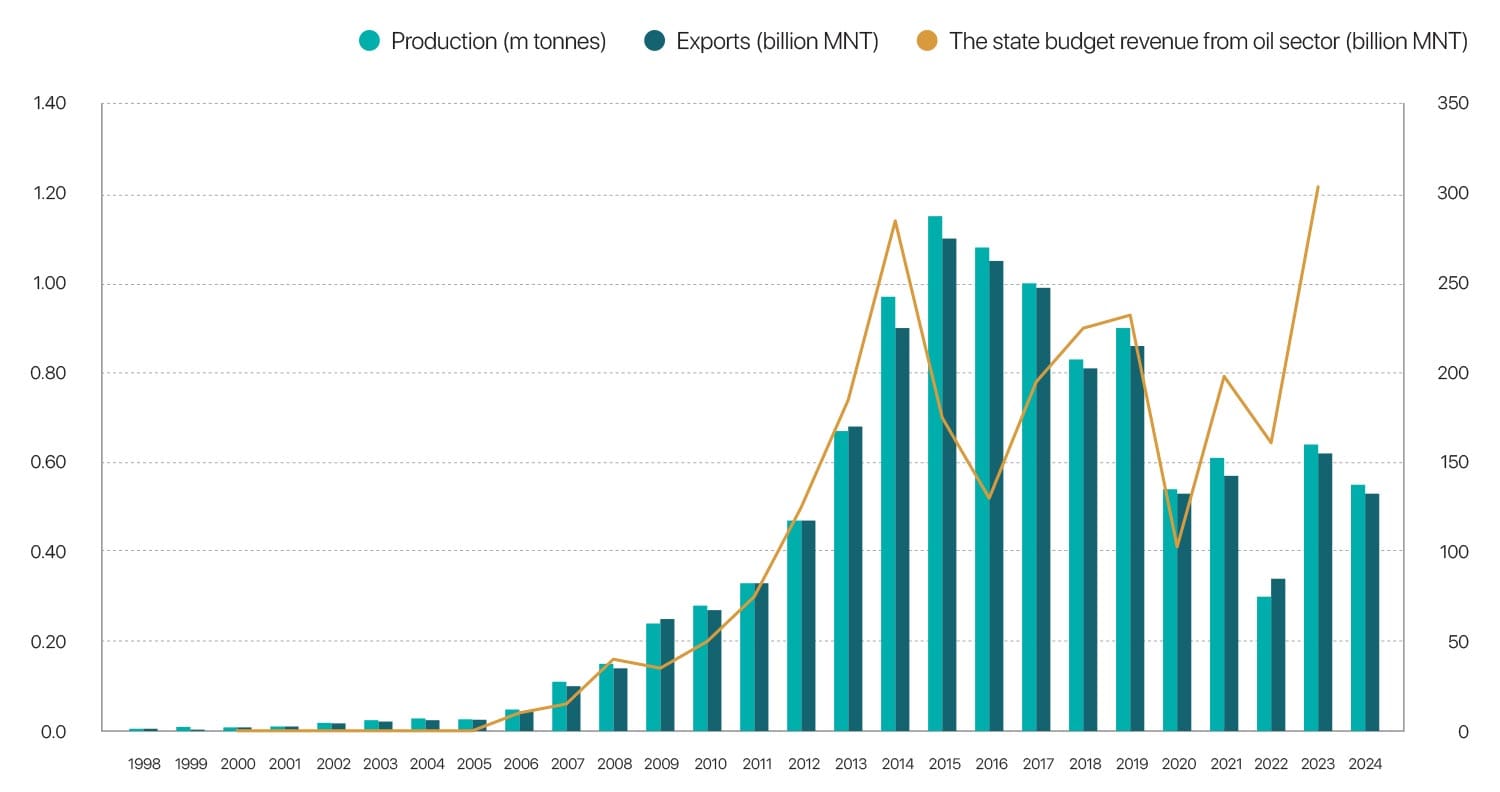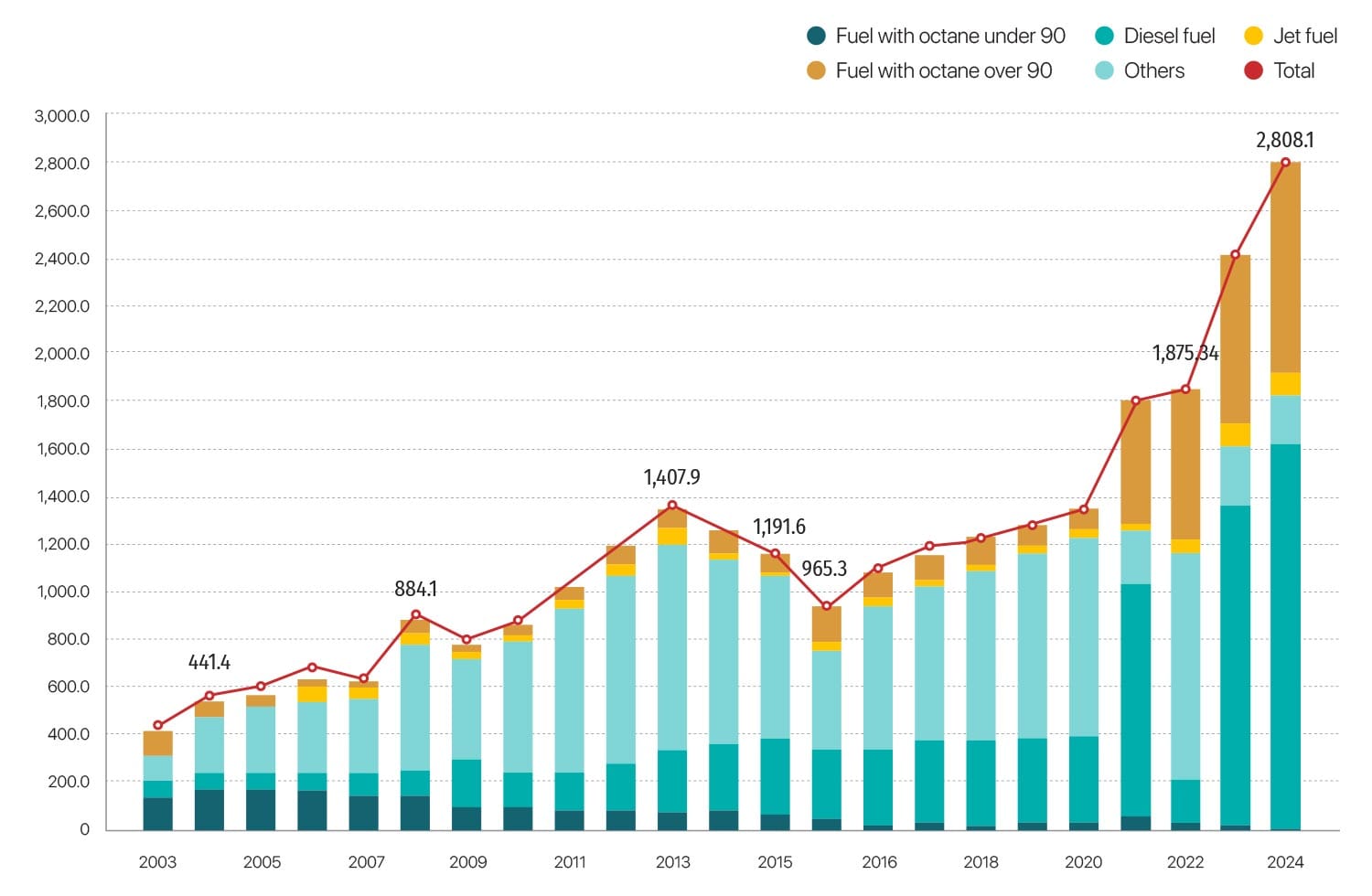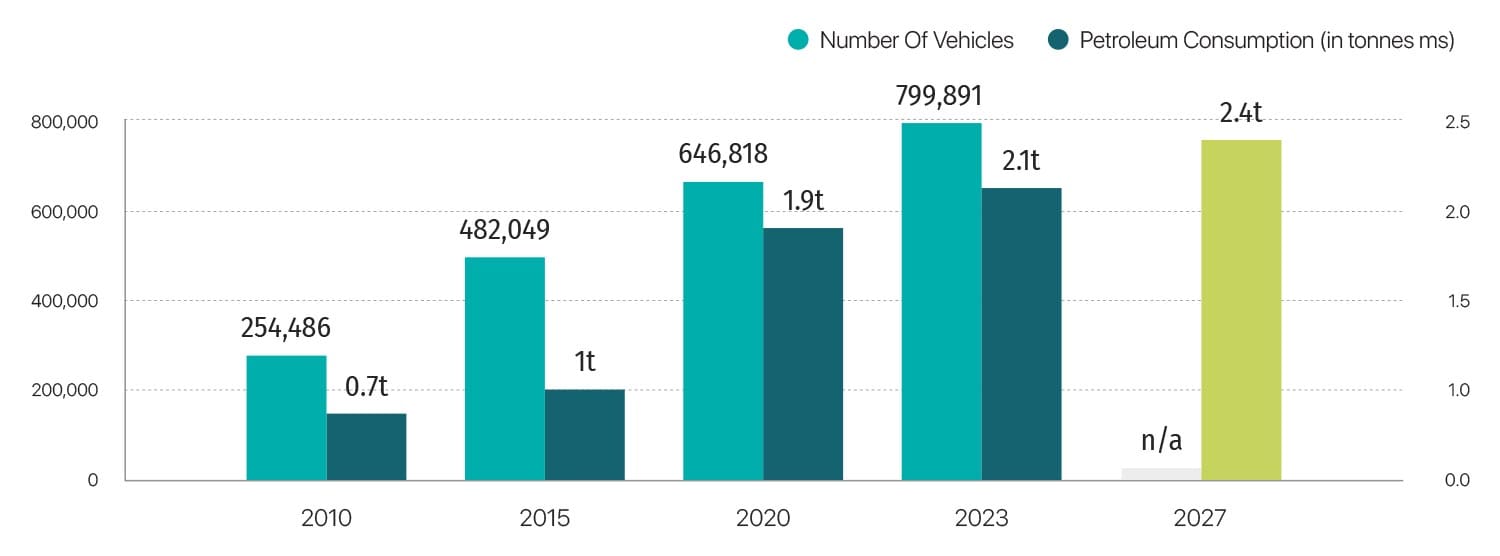Highlights:
Exploration & Reserves
Mongolia’s oil industry goes back over 80 years.
American geologists first surveyed the Gobi region and speculated oil reserves in the 1930s. Since then, Mongolian, and Russian geologists have conducted numerous large-scale surveys and have discovered several reserves.
In 1940, Mongolian geologist J. Dugersuren and Soviet geologist Y.S. Zhelubovsky, leading the 17th team of the Eastern Expedition, conducted exploration in the Zuunbayan Basin and made the first oil discovery in Mongolia.
Over the following decade, more than 100 promising structures were identified and evaluated in Nyalga, Dornogovi, Choibalsan, Umnugovi, and the Tamsag Basin, leading to the discovery of the Zuunbayan and Tsagaan Els oilfields.
Based on these two fields, the Zuunbayan oil refinery was built and commissioned in 1949. Between 1950 and 1969, over 500,000 tonnes of crude oil were extracted and refined, supplying a significant portion of the country’s fuel and petroleum needs.
In the early 1990s, oil exploration projects resumed in Mongolia. The Petroleum Law of Mongolia was put into effect in 1991. Petroleum exploration and production in Mongolia are performed solely under Production Sharing Contracts (PSC) signed over each petroleum block between the investor and the Government of Mongolia.
The first Production Sharing Contract was signed in 1993. Four years later, exploration work on Block XIX identified the country’s first free flowing oil. Soon after, oil production and exports to China was commenced.
Ever since then, Mongolia has identified 39 petroleum exploration blocks in total. Among these, 4 blocks are under oil production and extraction, 9 blocks are under oil exploration, and 6 blocks are designated for unconventional oil exploration, including coalbed methane gas. These projects are carried out under Production Sharing Contracts granted by the Government of Mongolia.
Over the past 30 years, a total of $4.6 billion has been invested in oil exploration and survey. As a result, Mongolia has confirmed 332.64 million tonnes of proven oil reserves and 43.3 million tonnes of recoverable reserves, officially registered in the National Mineral Resource Database. Between 1996 and 2023, a total of 10.4 million tonnes of crude oil was extracted from the Toson-Uul, Tamsag, Zuunbayan, and Tsagaan Els oilfields and exported. Revenue from oil exports under the Production Sharing Contracts contributed approximately MNT 2.5 trillion to the state budget.
Petroleum exploration and production in Mongolia are performed solely under Production Sharing Contracts (PSC) signed over each petroleum block between the investor and the Government of Mongolia.
As of 2024, out of the 34 petroluem fields, 4 fields are advanced to production, while exploration is being conducted on 9 fields.
In terms of unconventional petroleum exploration, the Government has PSCs and exploration contracts in place for 6 fields (coalbed methanes).
LOCATION OF OIL AND UNCONVENTIONAL OIL FIELDS
LOCATION OF OIL AND UNCONVENTIONAL OIL EXPLORATION FIELDS WITH CONTRACTS
Production & Export
PetroChina Daqing Tamsag currently accounts for more than 95% of total oil production & exports and Dongsheng Oil around 5%. PetroChina Daqing Tamsag exports to Chinese refineries by truck via the Bayankhoshuu border point, while the Dongsheng Petroleum Mongol Company exports by rail. In addition, Mongolian government granted Petro Matad Limited a 25-year exploitation license for Field XX in Eastern Mongolia in 2021 and the company commenced its production in 2024. It was also reported that in 2025, the oil exploration of Field XX was fully transferred to the state’s special use. The company stated that this marks the first oil exploration and production field in Mongolia to be designated as a special purpose zone.
Key indicators of Toson-Uul oil field (as of 2021)
Toson-Uul
- Location: Matad soum, Dornod province
- Contractor: PetroChina Daqing Tamsag (Mongolia) LLC
- Effective date: 1993
- Extraction area: 650 square km (8.4% of exploration area)
- Number of wells drilled: 982
- Oil extraction wells: 491
- Oil extraction per day: 1,115 tonnes
- Oil: 836 kg/m3, 0.1% of sulfur, 5.75 mPa.s
Key indicators of Tamsag oil field (as of 2021)
Tamsag oil field
- Location: Khalkha Gol soum, Dornod province
- Contractor: PetroChina Daqing Tamsag (Mongolia) LLC
- Effective date: 1995
- Extraction area: 209.2 square km (2.1% of exploration area)
- Number of wells drilled: 589
- Oil extraction wells: 311
- Oil extraction per day: 1,242 tonnes
- Oil: 875 kg/m3, 0.17% of sulfur, 18.9 mPa.s
Key indicators of Zuunbayan, Tsagaan-Els oil fields (as of 2021)
Oil fields of Tsagaan Els, Zuunbayan
- Location: Zuunbayan bagh, Sainshand soum, Dornogovi province
- Contractor: Dongsheng Petroleum Mongolia LLC
- Effective date: 1997
- Extraction area: 239.5 square km (4.5% of exploration area)
- Number of wells drilled: 131
- Oil extraction wells: 102
- Oil extraction per day: 134 tonnes
- Oil: 878 kg/m3, 0.1% of sulfur, 29.6 mPa.s
Key indicators of Heron oil field (as of 2021)
Reserves of oil fields in Mongolia (million tonnes)
Oil production, exports and budget revenue from oil sector
Mongolia produced a total of 85 million barrels, or 11.16 million tonnes of oil, and exported 81.5 million barrels, or 10.71 million tonnes of oil to China in 1996-2024, generating MNT 2.4 trillion /as of Q1 of 2024/ to the state budget from oil. The government fully supports domestic oil industry.
Daily crude production of Mongolia
Mongolia’s petroleum consumption and imports
Mongolia’s fuel consumption is fully reliant on imports, with an average of two million tonnes of oil products are imported annually. This number has increased to 2.7 million tonnes in 2024. More than 90% is imported by Russia’s state-owned Rosneft and the rest from China and South Korea.
FUEL IMPORT OF MONGOLIA (IN THOUSAND TONNES)
Imports of gasoline and diesel fuel jumped 10% between 2006 and 2013. But the dimnishing economic activity lowered the overall imports of gasoline in recent years.
Petroleum products import by country and type
In terms of grade, the imports of A-80 fuel shrank over years, while A-92 fuel import increased consistently. However, a growth scenario is highly likely for diesel fuels with the expansion of the mining sector in Mongolia.
Mongolia’s petroleum consumption and vehicle numbers
Petroleum products are imported on a monthly basis, based on the average of the previous month’s price on the Singapore Commodity Exchange. A total of 78 importers petroleum products locally. Nationwide, fuel is sold through a network of 106 warehouses owned by petroleum companies, over 1,419 gas-fueling stations, 10 liquefied gas storage facilities, and 78 natural gas vehicle filling stations.
Oil refinery project
The $1.24 billion Oil Refinery Project, funded by a soft loan from the Export and Import Bank of India, was approved in 2018. Unlike Oyu Tolgoi, which is managed by Rio Tinto, the Oil Refinery is a government-led project. Planned in four phases of construction, the project faced delays and increased costs due to the Covid pandemic. Originally set for completion in 2024, the first phase remains unfinished, the loan repayment period began and financing for the remaining phases has stalled. The project now requires additional funding and is expected to be completed by 2027. Once operational, it will process 1.5 million tonnes of oil, meeting 55% of Mongolia’s domestic needs.
Details:
Annual capacity: 1.5 million tonnes of oil production
Location: Altanshiree soum, Dornogovi province
Raw oil sources: Toson Uul XIX and Tamsag XXI
Quality of petroleum production: MNS and Euro V
Annual operating hours: 8,000 hours
Power source: 35 MW power station.
Laws and regulations
Matters pertaining to petroleum and unconventional petroleum prospecting, exploration, and exploitation within the territory of Mongolia are regulated by the Petroleum Law of Mongolia.
The Petroleum Law of Mongolia was adopted in 1991. The law was revised in 2014 providing clear and transparent legal environment and creating more favorable conditions for investors. The law regulates the operations of Mongolian and foreign entities or individuals on exploration, production, transportation, storage, and marketing of oil in Mongolia.
The MRPAM is the government agency overseeing the implementation of the law and relevant regulations.
The term “oil exploration” refers to geological, geochemical, geophysical, drilling, and extraction testing work to be performed for the purpose of oilfield discovery and establishing oil reserves. “Exploitation” refers to development and extraction operations for exploiting a petroleum and unconventional petroleum deposit.
Petroleum exploration and production in Mongolia are performed solely under Production Sharing Contracts (PSC) signed over each petroleum block between the investor and the Government of Mongolia.
